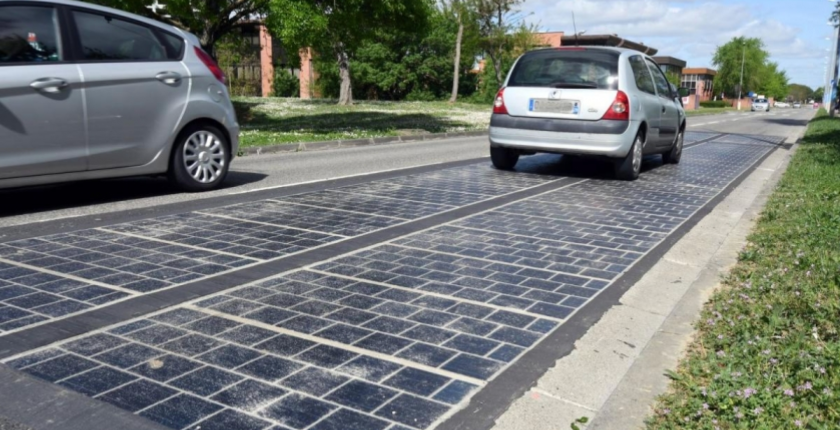1000 Solutions - July 4, 2019
Wattway, on the road to renewable energy


Written by Tristan Lebleu
This new road is a solution to power road equipment in remote locations.
As the world continues on its path to electrification, the energy needs will have doubled by the year 2050. The need for clean and renewable sources of energy is rapidly intensifying, and some innovators are looking for new solutions to answer such needs. While rooftops, farmlands, deserts (and even seas) are obvious choices for the installation of solar panels, one other option is now increasingly being considered: roadways.
Indeed, pavement is a flat surface, which is only occupied by vehicles some 10% of the time. According to the CIA’s World Factbook, the total length of roadways around the world is approximately 36 million kilometers, or 26 times the diameter of the Sun. Now, imagine the amount of energy produced if we could turn part of this passive infrastructure into energy producers?
Wattway, developed by French leader in transport infrastructure Colas, has invented the first solar road, which combines road construction with photovoltaic technologies to provide clean and renewable electricity. Thanks to its robustness, Wattway’s solar road can produce energy while handling the weight of heavy vehicles.
The solar energy from the road panels is used to power many energy-consuming equipment located near the road. The solution acts as an autonomous generator, without any grid connection, which makes it a particularly useful solution for remote locations. These road equipments typically include traffic signs, speed limit signs and pedestrian lights.
The first kilometer of Wattway’s solar road was installed in 2016 in Tourouvre-au-Perche, France, and was expected to supply 280 megawatt-hours of energy annually, or about 767 kilowatt-hours per day. Even though the results of this first test show that the solar road produced less electricity than expected, such real-condition tests are important to improve the technology and evaluate where it could be most efficient.
In a recent Linkedin post, Etienne Gaudin, Wattway’s Managing Director, declared: “Be it from trials in Europe, Asia, or North America, feedback from around the world has been of great use. We are convinced that there are very relevant new solutions for supplying electricity to roadside equipment. This is why we plan to market small-sized solutions (just a few square meters) to power equipment that is not connected to the electricity grid (for example a stand-alone remote video surveillance camera in Montpellier).”
Will solar roads replace solar roof installations? Probably not. Nevertheless, this new technology is indeed a major breakthrough to install road equipment and increase road safety in remote areas, where grid connection is not an option.

Written by Tristan Lebleu on July 4, 2019
